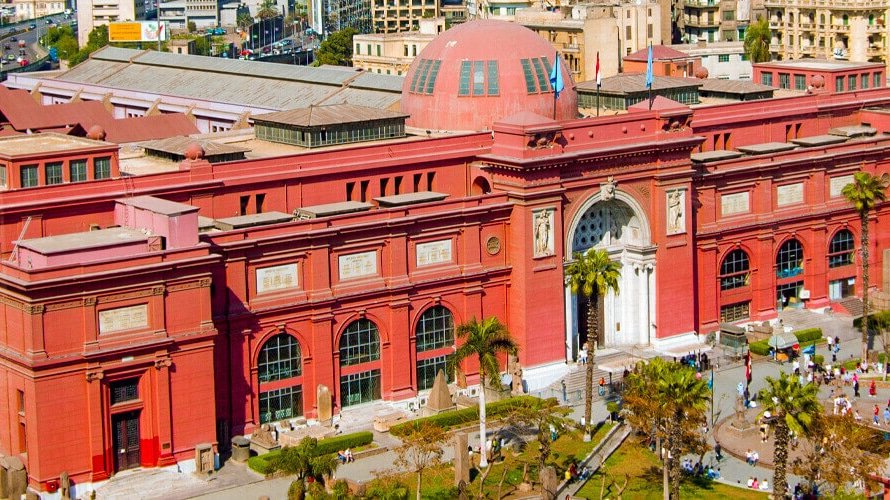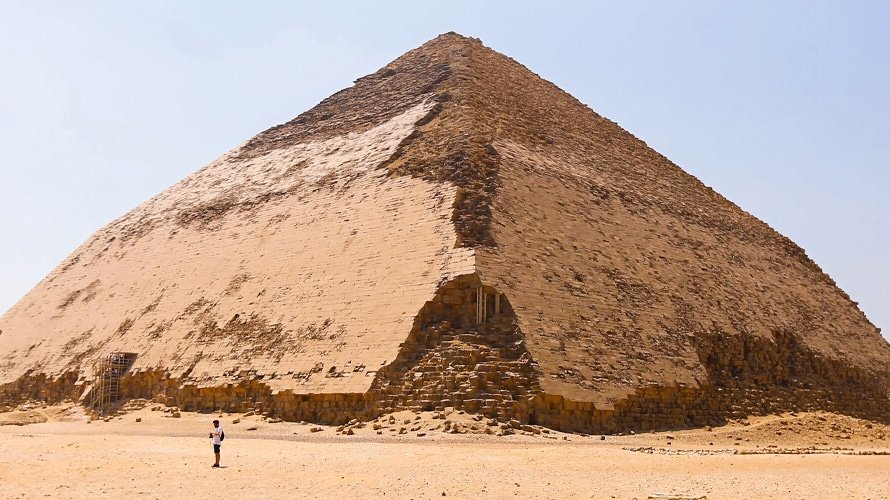The Giza Pyramids Complex is one of the most iconic and awe-inspiring archaeological sites in the world. Located on a desert plateau on the outskirts of Cairo, Egypt, this ancient marvel showcases the incredible ingenuity of a civilization long past. At its heart stand three magnificent pyramids: the Great Pyramid of Giza (Khufu), the Pyramid of Khafre, and the Pyramid of Menkaure. Guarding these colossal tombs is the enigmatic Sphinx, its weathered gaze fixed eternally on the horizon. The Giza Pyramids Complex holds a well-deserved place on the UNESCO World Heritage list, a testament to its profound impact on human history and imagination.
Unraveling the History of the Giza Pyramids
The Giza Pyramids stand as enduring mysteries, their construction methods and purpose captivating historians and archaeologists for centuries. Let’s delve into the fascinating theories and uncover the stories behind these colossal structures.
Giza Pyramids Construction: An Engineering Enigma
The sheer scale of the pyramids poses the greatest riddle – how did the ancient Egyptians manage to transport and lift millions of multi-ton stone blocks without modern technology? Theories abound, the most prominent being complex systems of ramps, possibly combined with water flotation techniques. While no single theory provides all the answers, they highlight the incredible resourcefulness and organization of ancient Egyptian society.
Purpose of the Giza Pyramids: Tombs for the Divine
The pyramids were not merely grand monuments; they served a deeply spiritual purpose. Ancient Egyptians believed in the afterlife and saw the pharaoh as a bridge between the earthly and divine realms. The pyramids were meticulously designed as elaborate tombs, intended to protect the pharaoh’s body and possessions, ensuring a smooth passage to the afterlife.
The Pharaohs Behind the Structures: Eternal Legacies

The Giza plateau bears the names of three powerful Fourth Dynasty pharaohs:
- Khufu (Cheops): The visionary behind the Great Pyramid, the largest of its kind.
- Khafre (Chephren): Khufu’s son, who built the second pyramid and is possibly the creator of the Sphinx.
- Menkaure (Mycerinus): Khafre’s son, responsible for the smallest of the three main pyramids.
These pharaohs commanded immense wealth and manpower, allowing them to undertake such ambitious projects. Their pyramids stand as timeless testaments to their power and their belief in the eternal.
The Great Pyramid: An Engineering Marvel
The Great Pyramid of Giza, the tomb of Pharaoh Khufu, is an unparalleled feat of engineering that continues to amaze the modern world. Let’s explore its colossal scale, intricate internal design, and the remarkable construction techniques that made it possible.
Dimensions and Scale: A Monumental Achievement
The Great Pyramid originally stood at an awe-inspiring 146.5 meters (481 feet) tall. Its base covers a staggering 13 acres, with each side measuring approximately 230 meters (755 feet) in length. It’s estimated to contain over 2.3 million stone blocks, some weighing upwards of 80 tons! These mind-boggling statistics underscore the sheer ambition and dedication involved in its construction.
Internal Structure: A Journey to the Afterlife
Within the pyramid lies a complex network of chambers and passages:
- The King’s Chamber: The pharaoh’s final resting place, it houses a massive granite sarcophagus.
- The Queen’s Chamber: Though likely never intended for a queen, its name reflects its prominence.
- The Grand Gallery: An impressive ascending passageway with a corbeled ceiling, leading to the King’s Chamber.
Construction Techniques: Precision and Planning
The Great Pyramid’s construction exemplifies the precision and ingenuity of ancient Egyptian builders. The stones were cut with remarkable accuracy, fitting snugly together without the use of mortar. Furthermore, the pyramid is astonishingly aligned to true north, demonstrating advanced astronomical knowledge. The exact methods used remain a source of debate, but their mastery of geometry, labor organization, and transportation is undeniable.
The Enigmatic Sphinx
A colossal figure carved from bedrock, the Sphinx stands guard over the Giza plateau, its gaze fixed on the eastern horizon. This mythical creature, with the body of a lion and the head of a human, holds deep symbolism in Egyptian mythology and continues to fascinate with its mysterious origins.
Origins and Symbolism: A Fusion of Power and Wisdom
While most Egyptologists believe the Sphinx was built during the reign of Khafre, its true builder remains debated. In Egyptian mythology, the Sphinx represents ‘Hor-em-Akhet’ (Horus of the Horizon), associated with the rising sun and the Pharaoh as an earthly manifestation of the sun god Ra. Its lion’s body symbolizes strength, while the human head signifies intelligence – the desired qualities of a powerful ruler.
The Riddle of the Sphinx: A Test of Wit
In Greek mythology, the Sphinx posed a deadly riddle to those who crossed its path. Those who failed to answer correctly were devoured. While the exact riddle of the Egyptian Sphinx might be lost, the story highlights its association with cunning and testing one’s wisdom.
Restoration Efforts: Preserving an Ancient Guardian
The sands of time and harsh desert conditions have taken their toll on the Sphinx. Throughout history, there have been numerous restoration efforts to repair erosion damage and stabilize the structure. Notable restorations occurred during the reign of Thutmose IV (1401 -1391 BC) as well as in modern times. These efforts ensure this iconic monument remains a symbol of Egypt for generations to come.
Explore the Giza Pyramids Complex
While the Great Pyramid rightfully commands attention, the Giza plateau is a treasure trove of ancient structures. Let’s explore the other pyramids, the Queens’ Pyramids, and the fascinating remnants of the funerary process.
Pyramids of Khafre and Menkaure: Continuing a Legacy
Though slightly smaller than the Great Pyramid, the pyramids of Khafre and Menkaure are impressive structures in their own right. Khafre’s pyramid appears taller due to its more elevated position and retains a portion of its outer limestone casing at the top. Menkaure’s pyramid stands out for its distinctive granite casing on the lower levels. These pyramids reflect the enduring tradition of monumental tomb building within the Old Kingdom of Egypt.
Queens’ Pyramids: Honoring Royal Women
Clustered near the main pyramids are smaller, subsidiary pyramids known as Queens’ Pyramids. These were dedicated to the wives and possibly mothers of the pharaohs, highlighting the important roles of women within the royal lineage.
Valley Temple: Gateway to the Afterlife
Each pyramid complex included a Valley Temple located closer to the Nile. These temples played a crucial role in the mummification process and ongoing mortuary rituals. Khafre’s Valley Temple is exceptionally well-preserved, built of massive granite blocks and featuring beautiful life-sized statues of the pharaoh.
Solar Boat Museum: A Symbolic Journey
Adjacent to the Great Pyramid lies the Solar Boat Museum, housing a meticulously reconstructed ceremonial vessel discovered in a sealed pit. These “solar boats” were symbolic vessels meant to transport the pharaoh’s soul on its eternal journey through the heavens alongside the sun god, Ra.

Planning Your Visit to the Giza Pyramids
Experiencing the Giza Pyramids is a dream for many, and with careful planning, you can make your visit unforgettable. Let’s cover the best times to go, how to secure tickets, what to pack, and how to get there from Cairo.
Best Time to Visit: Beat the Heat and Crowds
The ideal time to visit Giza is during the shoulder seasons of spring (March-May) or fall (September-November). The weather is pleasant, and the crowds are less intense. If you must visit during summer, early mornings or late afternoons are preferable to avoid the midday heat. Winter (December-February) can be crowded, but the temperatures are mild.
Tickets and Tours: Choose Your Adventure
- General Admission: Provides access to the Giza plateau, external views of the pyramids, and the Sphinx.
- Interior Pyramid Tickets: These are separate tickets with limited availability, allowing you to explore the inside of one of the main pyramids.
- Sound and Light Show: A dramatic nighttime performance with colorful illuminations and narration.
- Tours: Numerous options exist, from half-day pyramid tours to multi-day adventures that include other Egyptian highlights. Tours provide a guide, transportation, and often include entrance fees.
What to Bring: Be Prepared
- Sunscreen and Hat: The desert sun is intense. Protect yourself.
- Water: Stay hydrated! Carry a reusable bottle.
- Comfortable Shoes: You’ll be doing lots of walking on uneven ground.
- Sunglasses: Shield your eyes from sun and sand.
- Cash: Useful for tipping and small purchases from vendors.
How to Get There: From Cairo to Giza
- Taxi: Easily accessible from Cairo, but negotiate the price beforehand.
- Uber/Careem: Ride-hailing apps offer a convenient option.
- Metro + Bus: Budget-friendly, but involves taking Line 2 of the Cairo Metro and connecting to a bus or microbus to Giza.
- Organized Tour: Many tours include round-trip transportation from your Cairo hotel.
Conclusion
The Giza Pyramids Complex stands as an eternal testament to human ambition and the enduring spirit of ancient Egypt. Their colossal scale, intricate design, and mysterious origins continue to captivate our imaginations, centuries after their construction. The pyramids are not just monuments of stone; they embody the rich history, mythology, and profound beliefs of a civilization that shaped the course of human development.
If the whispers of the past call to you, a visit to the Giza Pyramids is an experience unlike any other. Walk where pharaohs walked, stand in the shadow of timeless giants, and let the desert wind carry you back through millennia. The Giza Pyramids Complex awaits, ready to unveil its secrets and leave you forever changed.
Related Article to Read:







